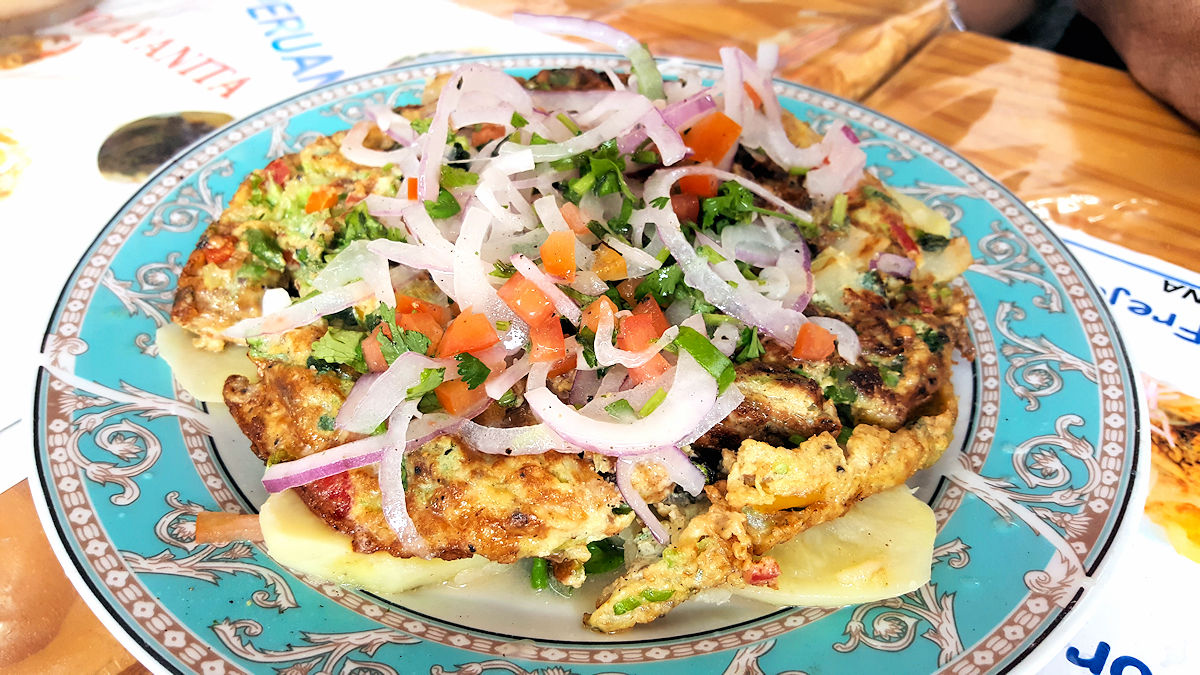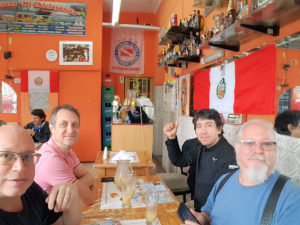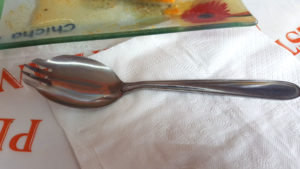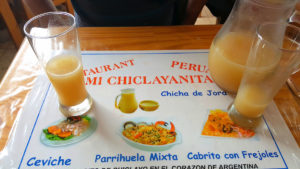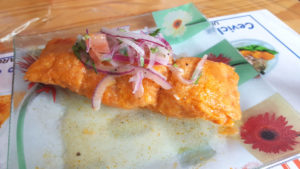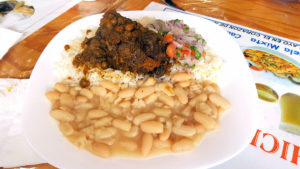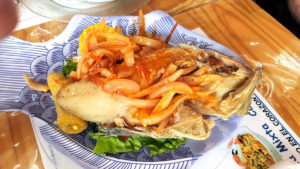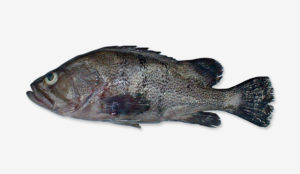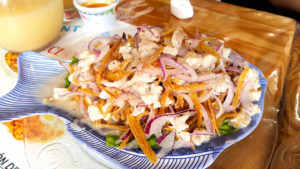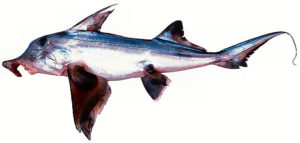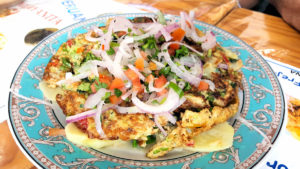Chiclayo is the principal city of the Lambayeque region in northern Peru. It is located 13 kilometers inland from the Pacific coast and 770 kilometers from the nation’s capital, Lima. Founded by Spanish explorers as “Santa María de los Valles de Chiclayo” in the 16th century, it was declared a city on April 15, 1835 by president Felipe Santiago Salaverry. He named Chiclayo “the Heroic City” to recognize the courage of its citizens in the fight for independence, a title it still holds. Other nicknames for Chiclayo include “The Capital of Friendship” and the “Pearl of the North”. Chiclayo is Peru’s fourth-largest city, after Lima, Arequipa, and Trujillo, with a population of 738,000 as of 2011.
Ain’t that a handsome group? It was the 39th outing of the Roving Ravenous Horde, and we headed northwest to the barrio of La Paternal, and what is rumored (quite believably) to be the only Peruvian spot in the city serving up dishes from Chiclayo, on the north coast of Peru. Mi Chiclayanita, Terrero 2502, corner of Punta Arenas, La Paternal, is not exactly on the beaten path, nor even in a particularly commercial area – it sits on a corner in the midst of a residential neighborhood, a couple of blocks from the Argentinos Juniors soccer (futbol) stadium. I’d contacted the chef/owner, Teresa Hernandez Cruz, the day before to let her know we were headed that way, hoping to taste some of her specialty dishes. She responded with delight and looking forward to meeting us.
Most of the menu, which isn’t a long one, is the typical fare you’d find at almost any Peruvian restaurant – lomo saltado, chaufa, pollada, pollo broaster, ceviche… but there are a couple of different items on the menu, and, for those in the know, or who check out her Facebook page, there are several off-menu items that she can make for those who want to try the real goods. And, she has sporks. I’ve not seen a spork in Argentina before.
She makes her own chicha de jora, the traditional home-brew corn “beer” of much of Peru. We ordered up a pitcher… and later another. The stuff creeps up on you, it goes down so smooth.
Two of our group had arrived about 10 minutes before the other two of us, and apparently feeling peckish, had ordered up a couple of tamales de cerdo, pork tamales, which arrived at the table in short order. Delicious, and some of the better tamales I’ve had in Buenos Aires – really just texture perfect, and great flavor.
Since I was the only one at the table familiar with Chiclayo fare, and the group seemed willing to just “go for it”, I asked about some of the dishes I was familiar with, some from the menu, some from the Facebook page, and one or two from stored trivia in my brain. Initially the waitress was in the mix, who, if I understood, is Chef Teresa’s daughter, but she swiftly turned things over to Teresa, who came out to talk to us. We settled on four dishes to share around the table, starting off with a cabrito norteño, a classic stewed goat with rice and beans. Easily the best version of this, or the similar seco de cordero, that I’ve had in Buenos Aires.
Next up, two fish dishes that are very traditional to the area. The first, which on the menu is listed as a causa norteña, though known more in the rest of Peru as a causa en lapa, is so very different from the causa limeña that we see on other menus. That version is usually a sort of stack of chilled mashed potato flavored with yellow chili and lemon, topped with some sort of mayonnaise based salad, like tuna, chicken, or vegetable, and adorned with avocado, tomato, black olives, and rocoto chilies. This is a hot dish with a peppery, coarse mashed potato underneath a whole salt-cured and pressed grouper (which she cures herself), over which is spooned a really good onion escabeche sauce. And, it’s accompanied by sweet potatoes, corn, and plantains.
I think we all felt the fish was a touch too salty, as salt-cured fish can be, like bacalao – with a good spoonful of the escabeche that was balanced out, but the salt still comes through. It’s not a dish I’d tried when we were in Chiclayo, though I’ve had a version of it at Fiesta Gourmet restaurant in Trujillo, which was very upscale and more delicate.
At the same time, we got a good sized bowl of chiringuirito, a close relative of ceviche that’s unique to Chiclayo. The fish, in that part of Peru called guitarita or pez guitarra, literally “guitar fish”, is not a true “guitar fish”, which is native only to the eastern Atlantic and Mediterranean, but is what here we call pollo del mar (“chicken of the sea”, and not Charlie the Tuna) or pez gallo “rooster fish”, in English usually called an “elephant fish” because of its trunk-like nose.
The fish is cured in a mix of lime juice, salt, and pepper, without the usual chilies or cilantro that go into most ceviches from the region. Slivered red onions, and shreds of the same fish, sun-dried (which she brings in from Peru), are added for texture and flavor. I think we all felt like it could have used a little more zip – some of the salt from the other fish, a little more citrus, and, some spice – we spooned her quite good hot sauce over the dish which made a world of difference.
And finally, what may be the most emblematic dish of Chiclayan cuisine, the tortilla de raya, an omelette made with skate, or ray, along with some chopped bits of the same sun-dried fish from above. Absolutely spectacular!
Let’s see, overall – first off, one of our most fun outings so far – it was a treat to get to spend time with the chef and talk to her about the food and the restaurant. We haven’t had that kind of attention since our forth outing, a year ago, at Cuba Bella. The space – nothing to write home about, it’s small, with maybe seating for 20 people at the most, and that would be a squeeze. The food, it was nice to have something different from the “usual suspects” identical menus at so many Peruvian restaurants here, and her passion for the cuisine of her home region is evident. We were wowed by 3 out of 5 dishes, and the other two were good, if not our favorites. I think any of us would happily make our way back there for the tamal, cabrito, or tortilla. Highly recommended. And the cost? With four main courses (which was at least one more than a group of four people needed), two tamales, and two pitchers of chicha, and tip, ran to 1840 pesos, or $48, $12 apiece. That’s a steal for this quality and quantity of food!
